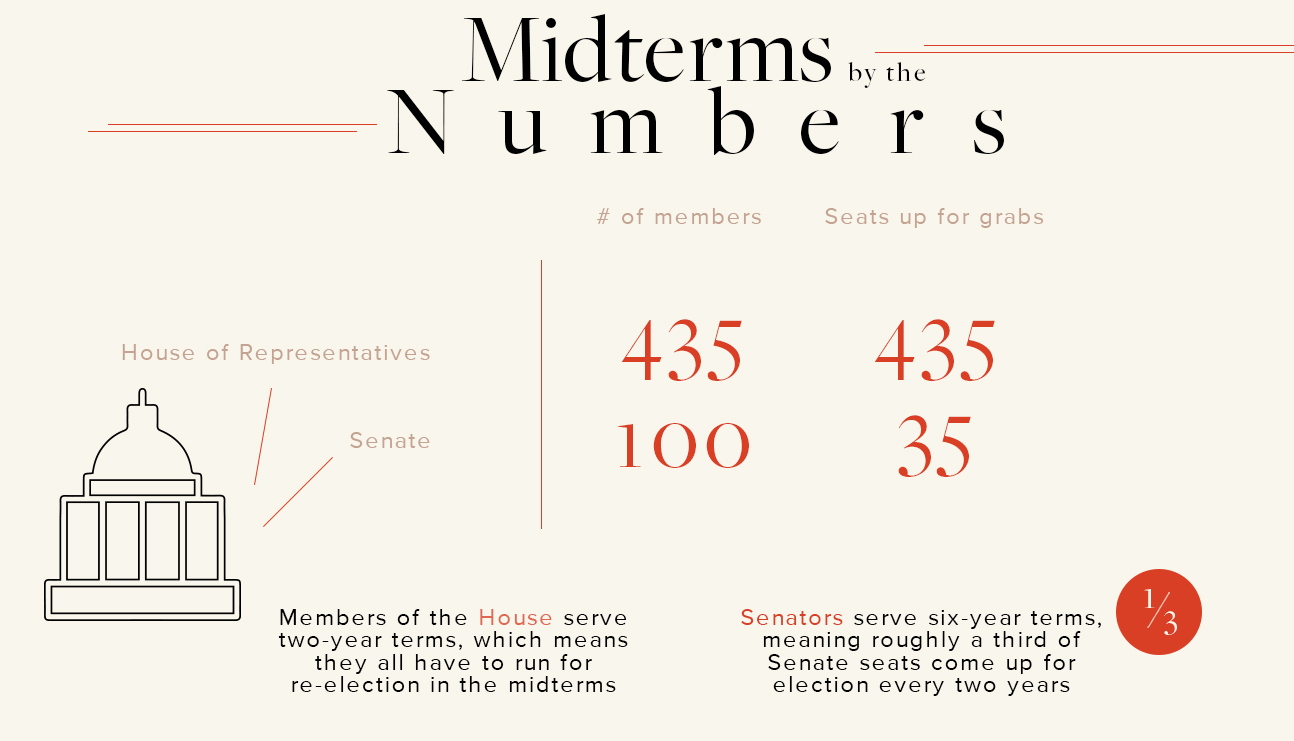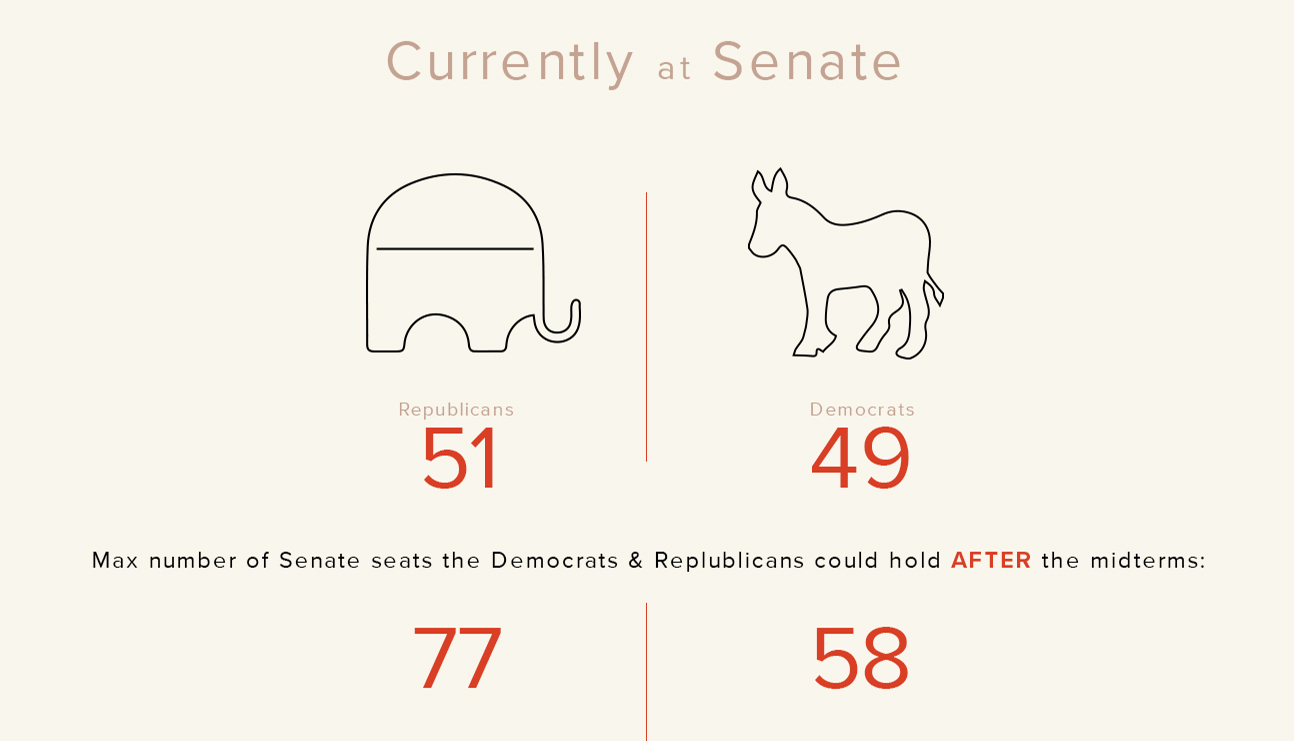Why The Midterms Matter
Kayleigh Roberts
We live in a politically-charged time. Whether you live on the liberal coasts or a deep red state in the middle of America, there’s a good chance you’re inundated with political opinions, rhetoric, and emotional arguments on Facebook. With so many competing voices, it’s easy for all things political to blend into a solid wall of seemingly-impenetrable noise that you want nothing more than to tune out.
As understandable as that desire might be at times (and trust us—we get it), political apathy just isn’t a viable option in 2018. There’s simply too much at stake during this year’s midterm races to sit election day out. We’re here to cut through the noise with a straight-forward, purely fact-based guide to why the 2018 midterms matter, because exercising your right to vote isn’t a partisan issues; it’s what you owe to yourself and to future generations.
What’s at stake in the 2018 midterms?
This is the rub, as Shakespeare would say. In order to understand why it’s so important to get out and vote on November 6, you have to understand what is at stake. On the most basic level, what’s at stake is control of the House and the Senate. “Okay,” you might be thinking, “but isn’t that what’s at stake…literally every election year?” Yeah, it is, but this year’s midterm election has the potential to make a bigger lasting impact than most elections on how America is governed for years, decades, or even generations to come.
Regardless of what side of the aisle you identify with, the big question for the 2018 midterms if whether or not the Democrats will succeed in taking control of the House of Representatives and/or the Senate (and how they’ll fair in state elections, too, which is just as important even though it isn’t getting as much national attention).
What would it mean for American politics if Democrats did take control of the House and the Senate?
If the Democrats manage to take control of the House and the Senate, it would effectively halt the Republican agenda. If your beliefs align more with Democrats than Republicans (meaning you tend to take a socially and economically liberal stance on issues, rather than a conservative one), this is particularly important because, frankly, winning control of both houses is an uphill battle for Democrats. The Senate will be especially difficult for Democrats to take control of, since several of the states they’ll have to win went to Trump in 2016. If you want to see a change in Congress, particularly if you live in a battleground state (when it comes to the Senate, 16 of the 35 races are considered “battlegrounds”), you absolutely need to vote.
What does this mean on a practical level? Let’s look at an example that many Americans have strong opinions about: The Affordable Care Act (known colloquially as “Obamacare”). In the Senate, most bills require 60 votes to pass, but some can pass with a simple majority (meaning a vote of 51-49). If the Democrats win control of the Senate, they could block Republicans from doing things like repealing Obamacare—which they almost did last year, by the way. They were just one vote shy of repealing the Affordable Care Act in 2017 and the deciding vote came from the late Senator John McCain. One or two seats might not seem like a lot, but the swing created by those couple of seats can—and almost certainly will—impact day-to-day life for millions of Americans.
Would taking control of Congress allow Democrats to pass whatever bills they wanted?
While the 2018 midterms are definitely going to be impactful, it’s important to have realistic expectations about what a swing in the House and Senate would mean. As long as Donald Trump is in office, Democrats won’t be able to pass much in the way of legislation at all if Republicans (including the president) are determined to block them.
As long as Trump is in office, he can veto any legislation passed by Congress and Democrats would need a two-thirds majority vote in both the House and the Senate to override that veto. It’s impossible for Democrats to win a two-thirds majority of the Senate because most (26 of the 35) of the seats that are up for election this year are currently held by Democrats already. This means that the Democrats are fighting to maintain seats in most races, as opposed to having an opportunity to flip seats.
What would a change in the power in Congress mean for Trump?
First, and most foremost, a change in the power in Congress would severely limit Trump’s ability to push through legislation that Democrats don’t agree with (which would apply to just about any legislation Trump would be likely to pressure Congress to pass). This would hinder his ability to make good on campaign promises (like building the wall and repealing the ACA), which could hurt his standing with his base.
It would also act as a message from the American public that approval for Trump and the rest of the Republican party is down (or, at very least, that voter apathy is up amongst Trump supporters), which could impact Trump’s chances for re-election in 2020.
Finally, it would make it difficult for Trump to push through judicial nominees, which is an issue that’s on the forefront of many Americans’ minds going into election day, following the controversial appointment and confirmation of Brett Kavanaugh to the Supreme Court.
What will be the biggest impact of the outcome of the midterm elections?
Maybe the biggest impact of the election will be the effect it has on the next round of redistricting for U.S. House and state legislative elections. This won’t be determined by the result of the Congressional elections, but by the gubernatorial elections—the state governor races. When it comes to redistricting, the people elected to state legislatures and governors’ offices make a big impact because those are the people who set the district lines.
So what’s the deal with redistricting anyway and why is it so important?
Every 10 years, we have a census, and the next one takes place in 2020. The new districts for U.S. House and state legislative races will be drawn based on the 2020 census data. This sounds boring and inconsequential, but drawing districts plays a huge role in shaping our country’s future thanks to Gerrymandering—the practice of drawing districts in such a way as to influence election outcomes.
How does Gerrymandering work? Basically, politicians have a history of drawing wonky-looking, crazy-shaped districts to bundle groups of citizens based on race, income level, and other factors that statistically indicate how they might vote. In practice, this means politicians can make a crazy district that contains all of the Democrats in an area, thereby consolidating their votes and limiting their voice in elections. If Republicans win these key state-level elections and control the districts again (they also saw landslide victories in 2010, the last time the census was conducted), they can draw the districts in a way that will skew elections in their favor for the next 10 years.
What are the midterm races to watch?
The Senate seats most up in the air for the midterms are: Arizona, Florida, Indiana, Missouri, Nevada, West Virginia, North Dakota, Montana, Minnesota, and Ohio. If you’re registered in any of these states, your vote is really important.
Whether you live in a battleground state or not, though, the midterms matter. Your vote—your voice—matters.
Kayleigh Roberts is a writer and editor. Her work has appeared in Marie Claire, Elle, Harper’s Bazaar, Cosmopolitan, The Atlantic, and Allure, among others.







